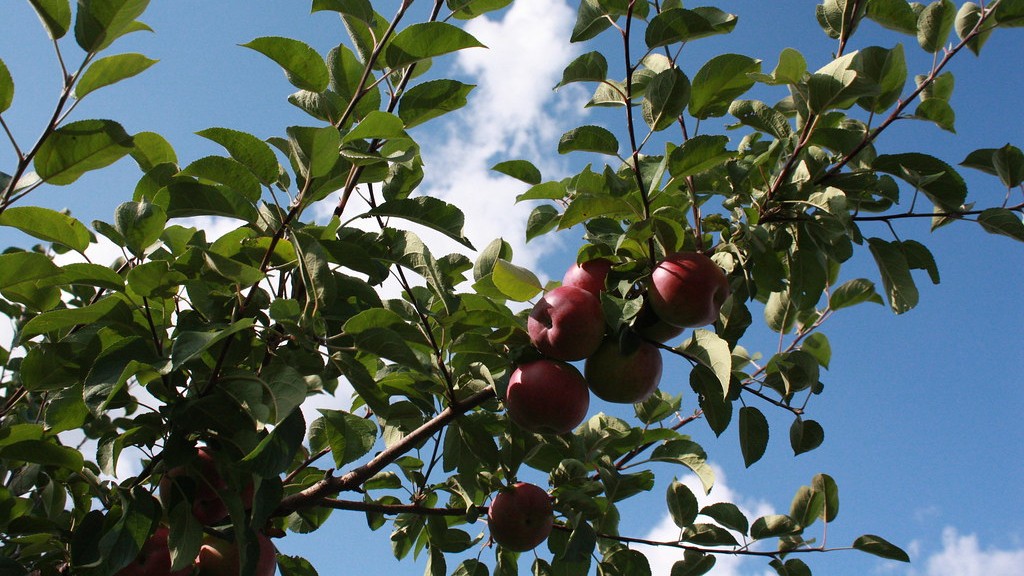First Diagnose
A healthy and productive avocado tree is an investment you take seriously. You take care of it, feed it and nurture it, but if it’s not producing, something might be wrong. Identifying why an avocado tree isn’t producing can be a very challenging endeavor – but not an impossible one. Gathering information and data from experts can help diagnosing and understanding the reasons why an avocado tree is not bearing fruit.
Avocado trees that are not bearing fruit may have unbalanced soil pH, be lacking essential nutrients, or suffer from heat stress. Other potential issues include water shortage, biological infestations, improper planting and pruning, or air pollution. Being aware of these potential issues can help to diagnose why an avocado tree is not producing, and the best solutions for availing solutions and solutions.
Getting To The Root Of The Problem
Avocado trees that typically grow in tropical climates thrive in temperatures between 50°F and 80°F, with sufficient water and moderate humidity. Although they are considered to be very resistant to cold, temps below 32°F may cause damage to the leaves or even kill the tree. When temperatures get too high and the tree is insufficiently watered, it will go into a semi-dormant state and won’t bear any fruit. To prevent such scenarios, it is best to keep avocado trees in the cool shade with plenty of regular watering.
Another possible factor that may lead to the unproductivity of avocado trees is a lack of essential nutrients. Overwatering can wash away important macronutrients such as Nitrogen, Phosphates, and Potassium; but also micronutrients such as zinc, iron and manganese – as well as essential Vitamins. If avocado trees are exposed to pollution from chemicals or heavy metals, then it may also reduce productivity and lead to poor fruit.
Act On The Symptoms
A hint that the soil pH is unbalanced is the appearance of yellowing or small stems on the leaves of your avocado tree. This can be corrected with the fertilization of fecund soil and the appropriate use of fertilizer. Keep in mind that avocado trees need different soil nutrition at different stages of growth and development.
Another possible reason why your avocado tree isn’t producing is biological infestations. Small bugs, mites, and other pests can cause a lot of damage to an avocado tree’s leaves, fruits, and roots. Avocado trees have a unique immune system, and although they can be attacked by different parasites, it is important to take action before the pest population gets to a size that will be difficult to eradicate. Many biological agents can be eliminated with suitable pesticides that are certified by the proper authorities, such as the Environmental Protection Agency or the State’s department of agriculture.
Restore The System
Improper pruning can also lead to decreased avocado productivity. Pruning should be done carefully – it is necessary to keep a proper balance of branches and leaves, while avoiding excessive pruning that can cause the growth of undesirable parts of the tree, such as weak branches or branches growing only in one direction.
Another important factor is the planting of the avocado trees. If the planting site is too deep, the tree may not receive enough air circulation, or the roots may not head in the proper direction. On the other hand, if the planting site is too shallow, then the roots may dry up and the tree will not be able to absorb enough water. Planting an avocado tree the right way is essential for its healthy growth and development, and therefore the production of fruits.
Analyze The Data
Having all this information about possible issues that may lead to a decrease in avocado tree productivity, it is important to diagnose, analyze, and compare the data. Consult with agronomists to identify the best solutions for your specific situation. Monitoring the tree’s progress is also an important step – taking notes on how long it takes the tree to flower, how much water it needs, in what climate and temperature it thrives, and other pertinent facts can be very helpful in understanding what is really going on and how best to intervene.
Another helpful tool is the use of technology. You can use drones to take an aerial shot of the orchard and help you keep an eye on all trees, or deploy soil moisture sensors to measure how much water the avocado tree needs and how to provide it. While analyzing the data, you can also add useful observations of your own, note out any symptoms and share it with agronomists to help them and you better understand the issue.
Stay On Track
Once you have diagnosed and identified the potential issues with your avocado tree, it is time for action. Stay focused on the action plan and use the most appropriate and suitable methods. Doing the work little by little is the way to restore an avocado tree’s productivity. And remember that every avocado tree is different, so there is no ‘one-size-fits-all’ approach to restoring an avocado tree’s productivity.
It is also important to take measures that respect the environment. Make sure that the pesticides used are certified, and use organic solutions whenever possible. For example, spraying your avocado tree with neem oil or baking soda can be an effective and environmentally-friendly solution to some pests.
Maintain The Balance
Finally, to prevent issues that lead to a decrease in avocado tree productivity, it is important to stay vigilant and use proper maintenance methods. A suitable soil pH, appropriate nutrients and fertilizers, regular watering and good pruning are essential in keeping your avocado tree healthy and productive.
In addition, it is important to bear in mind that the amount of fruits each season does not stay constant. The weather affects the yields, and one year might be more productive than the other. It is also important to give a rest period to the avocado tree after the fruiting – if the tree has too much fruit on its branches one season, it will need some time to rest and recharge before it is ready to bear fruit once more.
Harvest The Results
Once the productive cycle is back, it is essential to avoid overpicking the fruits. Removing all fruits during the same season might impact the amount of nutrients available and thus reduce the production of the following season. Knowing the ideal growth and development curve of the avocado tree and timing your harvest is essential to maintain its productivity.
It is also important to keep the soil moisture moderate, as excessively wet soil will promote the spread of fungus, while drought-like conditions will cause the branches to die. Make sure that the soil is moist enough to support the roots, and plant native trees to increase the soil moisture.
Foster The Environment
For productive avocado trees, not just the tree itself but its environment too should be taken into consideration. Planting other trees and vegetation will cool the soil and increase humidity, which in turn will help your avocado tree be productive irrespective of extreme temperatures. In addition, having native trees close by will bring beneficial insects such as pollinators and honeybees which can increase the production of fruit and eventually enhance the date’s tastes.
Finally, you might also want to consider getting some chickens or ducks. Their waste can be composted and applied to the soil, thus providing an adequate and rich environment for your avocado trees. The chickens and ducks will feed on the bugs that might attack your tree, and have a positive effect on the vicinity.
Harvest Time
Once you harvest the fruit, it is important to pay attention to post-production processes. Ripe fruit stays fresh for only a few days and should be packed and shipped promptly. For selling the fruit, you can look for certified buyers and farmers markets, where you can assure that both the trees and their environment are respected.
Finally, to have a successful avocado tree it is important to observe, measure, and collect data. Keeping a journal where all the data is written can be a useful tool to better understand the soil, the environment, and the different pests that might be present in your orchard. With this information you can deploy better solutions and maintain your avocado tree’s productivity or even improve it.
Conclusion
Analyzing why an avocado tree isn’t producing can be a daunting task, but certainly not an impossible one. A combination of solutions and technologies can help diagnose and correct any issues. From soil testing to insect control, the right steps need to be taken to restore a tree’s productivity. Once in its optimal condition, avocado trees can provide for healthy and delicious fruit for years to come.

